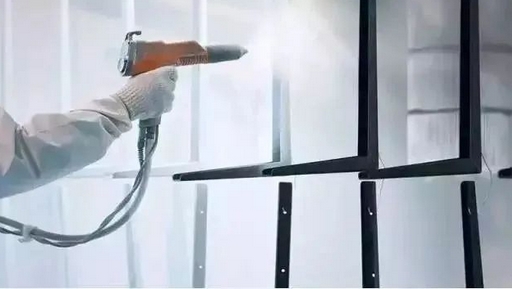Explanation: Spray Painting & Powder Coating Processes
Time:2024-03-12 21:02:59 Source:未知 Click:次

In the fields of manufacturing and repair, utilizing the correct surface coating technique is crucial for product performance, appearance, and longevity. Spray painting and powder coating are two mainstream surface treatment technologies, each with its unique process and key points to note. This article aims to provide a detailed introduction to the steps and precautions of spray painting and powder coating, helping practitioners avoid common issues in practice and ensure coating quality.
**Spray Painting Process and Precautions**
1. Surface Pretreatment: Remove oil, rust, and old paint layers from the surface to be sprayed. Methods such as mechanical grinding and chemical cleaning can be used. Ensure the surface is clean and has the right roughness to enhance adhesion.
2. Primer Application: Choose the appropriate type of primer, such as rust-inhibitive or filler primer, and spray it onto the surface. Pay attention to the gun distance and angle to maintain an even application.
3. Drying and Sanding: After the primer dries, gently sand the surface to remove small particles and runs, creating a smooth base for the topcoat.
4. Topcoat Application: Apply the color coat, usually requiring multiple applications to achieve the desired thickness and hue. Wait for each coat to dry completely before applying the next.
5. Clear Coat (Optional): To increase glossiness and protection, a clear coat can be applied over the color coat. Be careful to prevent dust inclusions and uneven spraying.
6. Full Cure: Place the coated product in a dust-free, well-ventilated oven, controlling temperature and time according to the process requirements to fully cure the coating.
Precautions:
- The spray painting environment should be dust-free and well-ventilated to avoid impurities in the coating.
- Spray guns and other equipment should be cleaned regularly to prevent clogging.
- Operators should wear proper protective gear, such as respirators and protective suits.
**Powder Coating Process and Precautions**
1. Surface Pretreatment: Similar to spray painting, the key is to remove oil, rust, and old coatings to improve powder adhesion.
2. Electrostatic Spraying: Use a specialized powder gun to apply an electrostatic charge and evenly spray the powder coating onto the electrically charged workpiece surface. The focus is on controlling the gun's speed and the amount of powder sprayed.
3. Baking and Curing: Send the powder-coated workpiece into an oven and melt the powder at high temperatures to form a uniform coating. Control of temperature and time is critical for coating quality.
4. Cooling and Inspection: After exiting the oven, the coating needs to cool naturally. Then inspect to ensure the coating is defect-free.
Precautions:
- Ensure good grounding during the powder process to maintain electrostatic effects.
- Oven temperatures should be even to avoid local overheating or unmelted areas.
- The recovery system should operate normally to collect overspray powder, reducing costs and protecting the environment.
Conclusion:
Whether it's spray painting or powder coating, surface pretreatment is a critical step in ensuring coating quality. Additionally, it's essential to choose the right spray parameters and curing conditions based on the type of coating, material of the workpiece, and production environment. By following the correct process and precautions, one can significantly improve the quality of the coating, extend product lifespan, while reducing production costs and environmental impact.


